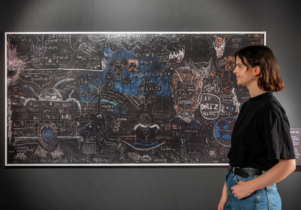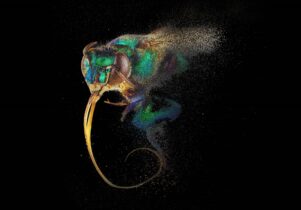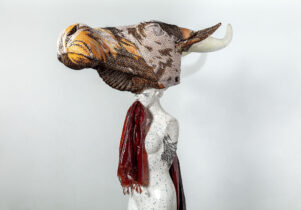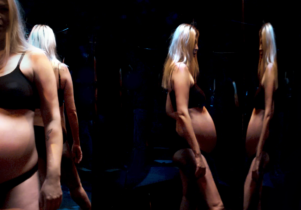Cosmotechnics at FACT
Maja Lorkowska, Exhibitions Editor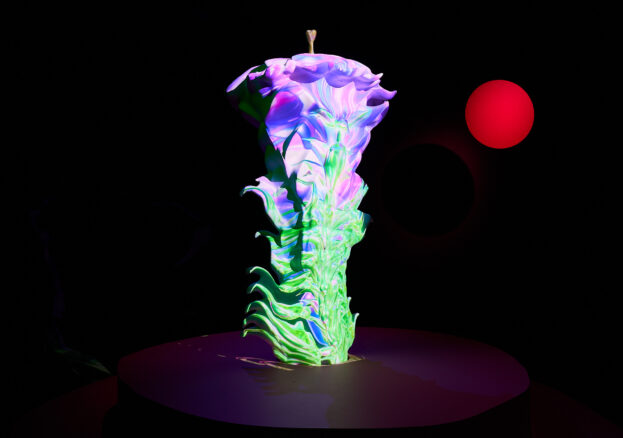
FACT takes on the relationships between culture, nature and technology in a new exhibition from four Latin American artists and collectives. Cosmotechnics challenges the idea that technology and its development is homogeneous across the world, bringing indigenous knowledge and local thinking into a visual conversation.
On entering FACT, you’ll encounter a set of works from Atractor Studio + Semantica in the Foyer Gallery – a collective of artists, biologists and engineers collaborated with the artist duo to combine scientific ideas with explorations of interspecies communication using new technologies. The works in this space address industrial farming, monocultures, genetically modified plants and the effect these practices have on the land.
Gallery 1 is home to a set of works by Patricia Dominguez which employ spirituality and ritual practices to highlight the energy that connects all living organisms in the face of extractivism and other destructive strategies.
Matrix Vegetal (2022) and Tres Lunas Más Abajo (Three Moons Below) 2024 are two videos shown side by side, accompanied by geometric neon structures, framing the videos and elevating both screens to icon-like significance – in these works, Domínguez homes in on plant consciousness. The artist’s extensive CV illustrates her dedication to furthering knowledge of interconnectivity and plant spirituality: she holds an MFA in Combined Media, a Botanical Illustration Certificate from the New York Botanical Garden, completed a residency at CERN and spent time with plant healer in Peru.
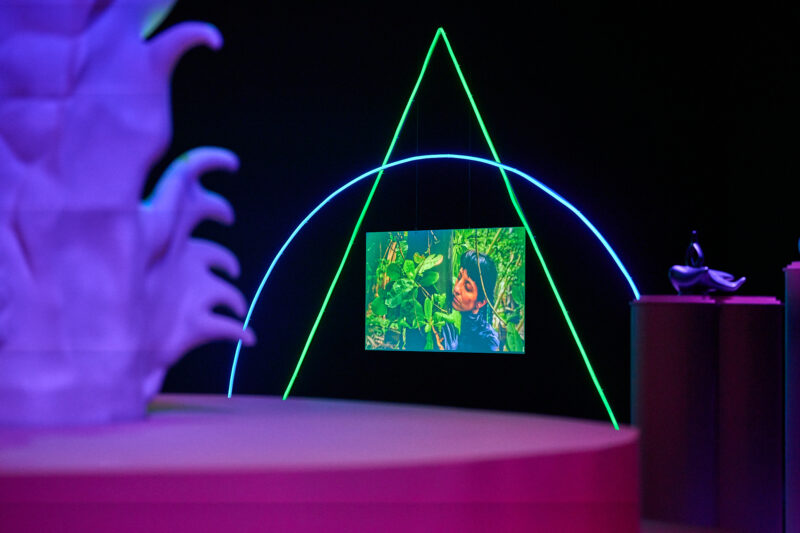
On the other side of the gallery, you’ll see Shrine, a delicate-looking collective altar composed of carefully arranged objects such as leaves, rocks and other organic matter. The artist invites viewers to contribute to the shrine by bringing their own objects which hold special importance and dedicate a prayer of their choosing. Domínguez wishes for the collective energy of the objects and intentions to transcend our human realm and connect to higher powers.
Rebecca Romero’s Chrysalis (2024) is the last piece in the room, using pre-Columbian imagery combined with modern technology to create a sculpture animated by a video, mapped onto the white structure. Chrysalis reacts to movement with an animation of a blooming flower on top of the totem-like form.
Cosmotechnics weaves together some of the most serious concerns of our time and an oddly relaxing ambience, with works that successfully combine conceptuality with alluring visuals.















